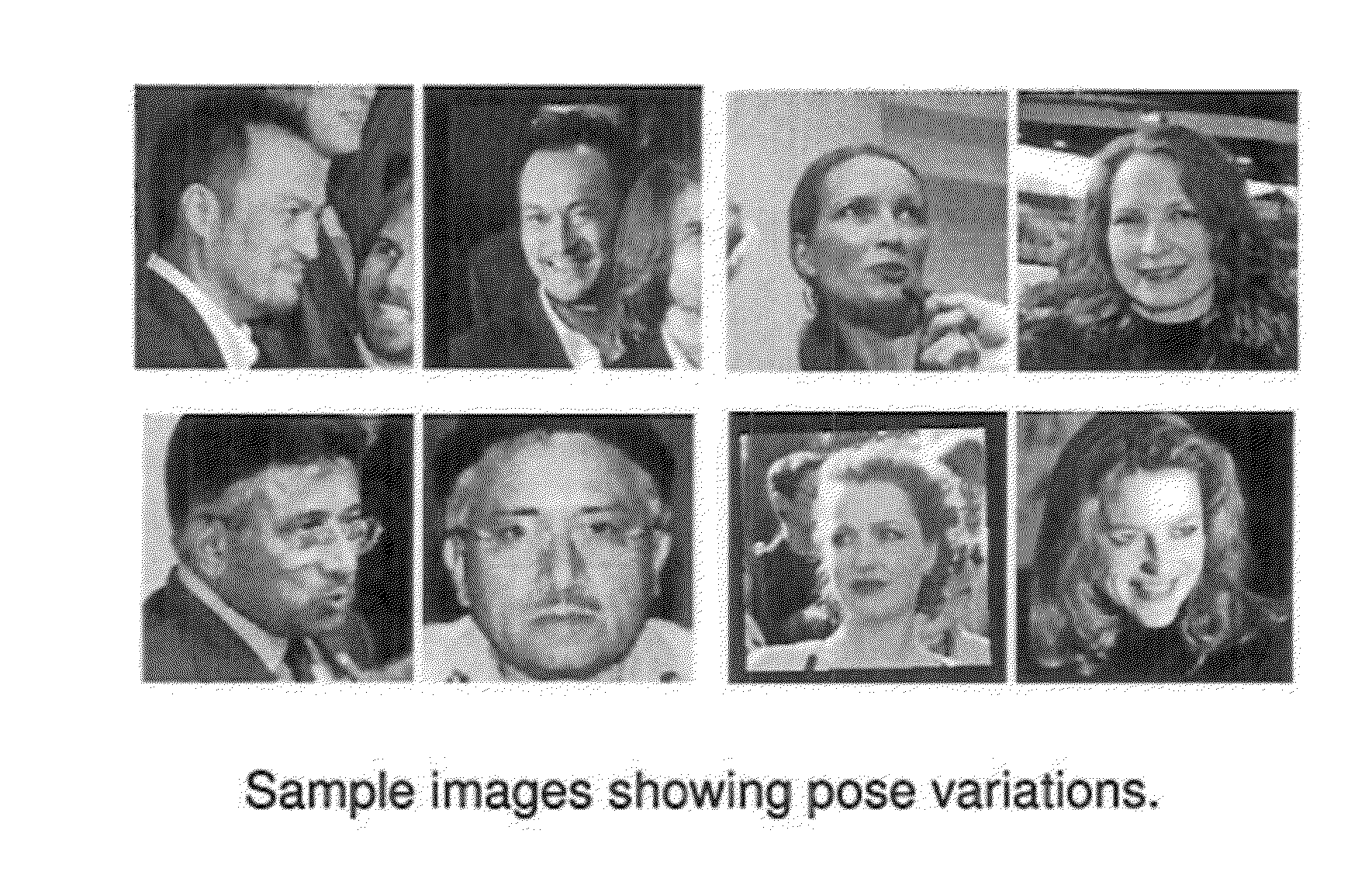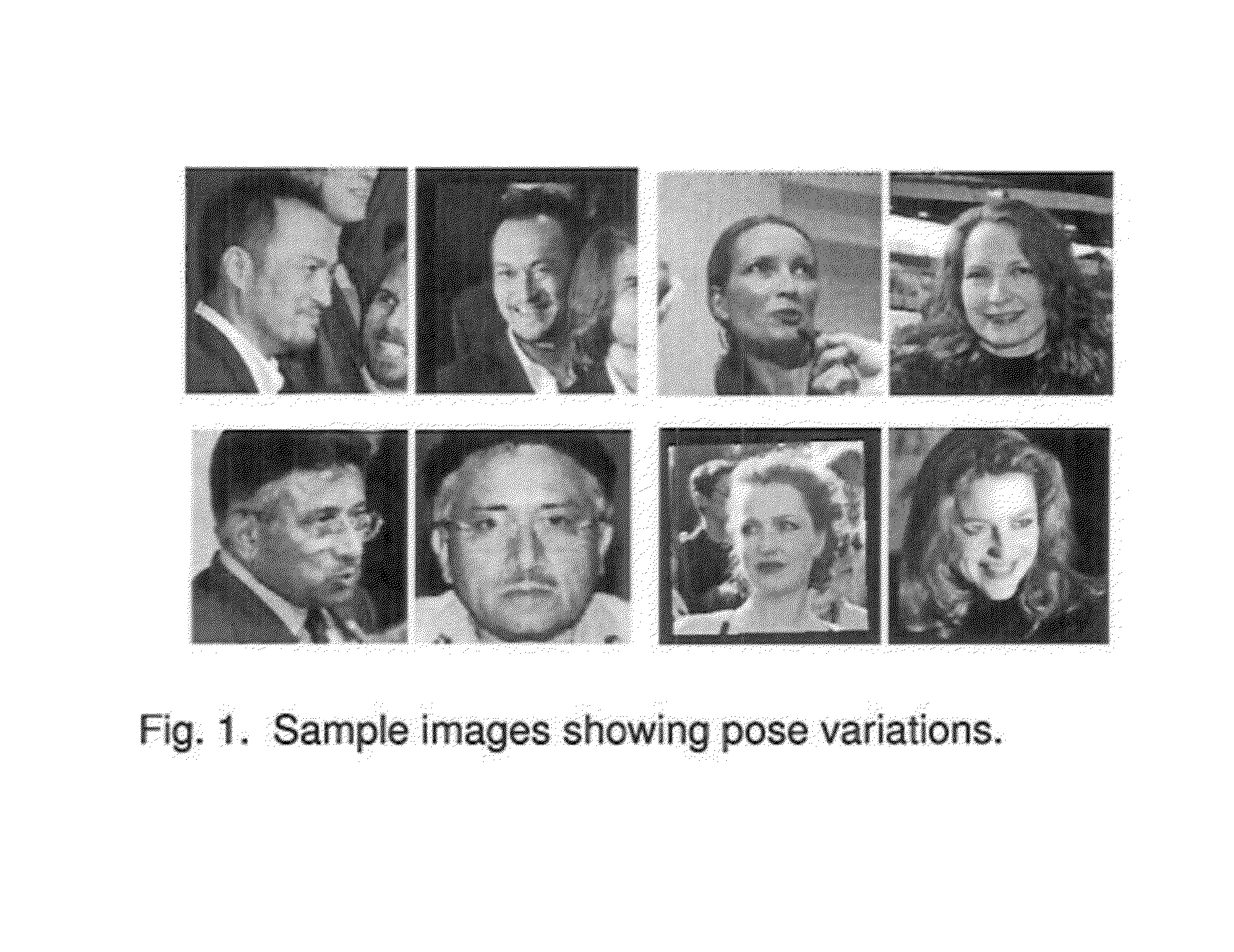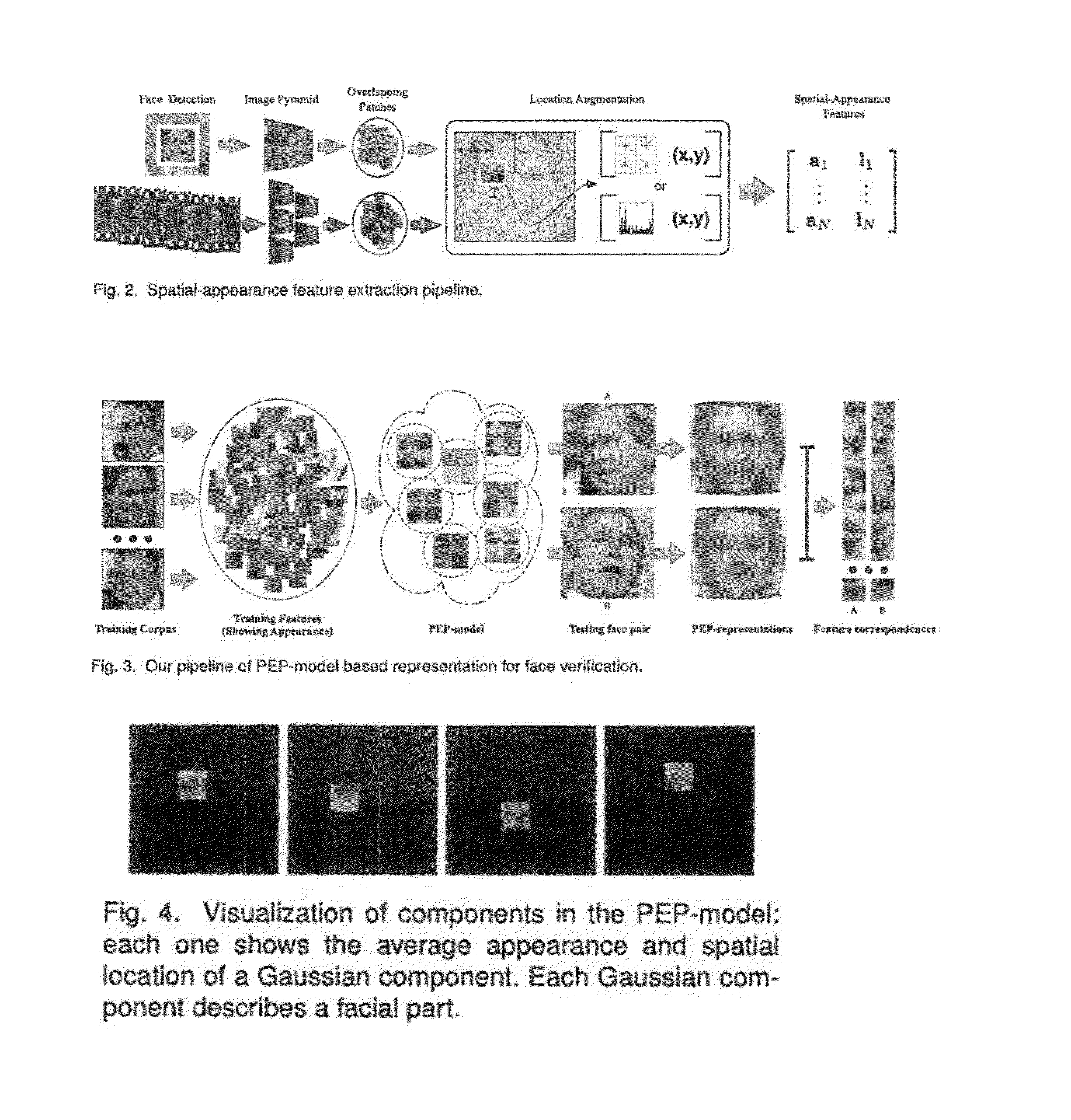Flexible part-based representation for real-world face recognition apparatus and methods
a face recognition and flexible technology, applied in the field of face recognition apparatus and methods, can solve the problems of affecting the robustness of face recognition algorithms, building a face alignment system robust to different poses, and a challenge for such systems to adequately account, etc., and achieves the effect of solving the problem of a single, difficult problem
- Summary
- Abstract
- Description
- Claims
- Application Information
AI Technical Summary
Benefits of technology
Problems solved by technology
Method used
Image
Examples
Embodiment Construction
[0049]Aspects of the present disclosure include face recognition apparatus and methods that account for changes in pose, illumination and face expression in images of the person subject to identification. The present disclosure presents a face recognition system capable of analyzing real-world images and videos captured without regard to pose, facial expression and illumination, which is also adequately flexible so that it can take into account new observations and factor out old representations. The present disclosure addresses the challenges to facial recognition which arise in the context of pose variant face verification under uncontrolled settings.
[0050]We propose another robust matching scheme to conduct pose-invariant face verification without requiring a strong face alignment component in H. Li, G. Hua, Z. Lin, J. Brandt and J. Yang, “Probabilistic elastic matching for pose variant face verification” in CVPR, 2013, which article is incorporated by reference herein in it's en...
PUM
 Login to View More
Login to View More Abstract
Description
Claims
Application Information
 Login to View More
Login to View More - R&D
- Intellectual Property
- Life Sciences
- Materials
- Tech Scout
- Unparalleled Data Quality
- Higher Quality Content
- 60% Fewer Hallucinations
Browse by: Latest US Patents, China's latest patents, Technical Efficacy Thesaurus, Application Domain, Technology Topic, Popular Technical Reports.
© 2025 PatSnap. All rights reserved.Legal|Privacy policy|Modern Slavery Act Transparency Statement|Sitemap|About US| Contact US: help@patsnap.com



